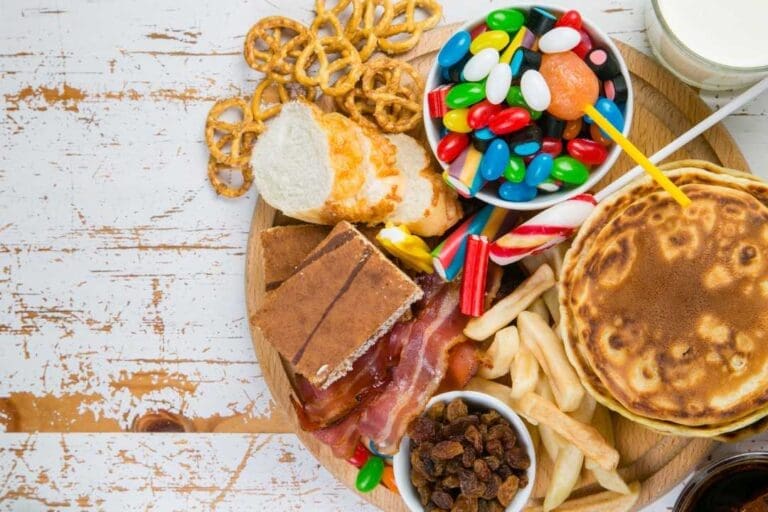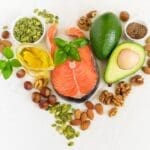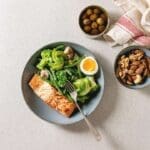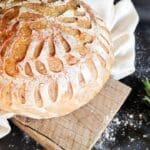Have you ever felt a burst of energy after eating, only to crash shortly after? It’s not just in your head—it’s your blood sugar at work. The foods you eat can either keep your glucose levels steady or send them on a rollercoaster ride that leaves you exhausted, irritable, and craving more sugar. Surprisingly, some of the most common “healthy” foods could be silently wreaking havoc on your energy and health. Let’s dive into the biggest culprits and explore simple swaps to help you feel your best.
What Happens When Blood Sugar Spikes?
When you eat foods loaded with refined carbs or sugars, your body absorbs them quickly, causing a sudden spike in blood glucose. This triggers your pancreas to release a flood of insulin to bring glucose levels back down. The result? A blood sugar crash that leaves you tired, irritable, and craving more sugar to fix the problem—a vicious cycle that’s terrible for your health.
Over time, this rollercoaster can lead to insulin resistance, where your cells stop responding properly to insulin. This can pave the way for type 2 diabetes, weight gain, hormonal imbalances, and inflammation.
The Worst Offenders That Spike Your Blood Sugar
1. Sugary Beverages
- Examples: Soda, sweetened iced tea, fruit juices, energy drinks.
- Why They’re Bad: These are liquid sugar bombs with zero fiber to slow absorption. They cause an immediate glucose surge, followed by a sharp crash. Even so-called “100% natural” fruit juices are loaded with sugar and lack the fiber found in whole fruits.
- What You Can Do: Replace sugary drinks with sparkling water, unsweetened herbal tea, or plain water with lemon.
2. Breakfast Cereals
- Examples: Flavored oatmeal, granola, and cereals marketed as “healthy.”
- Why They’re Bad: Most cereals are essentially sugar in a box, even those labeled “low-fat” or “whole grain.” The refined carbs hit your bloodstream quickly, leaving you hungry and irritable by mid-morning.
- What You Can Do: Stick with high-protein options like eggs, avocado toast on sourdough, or unsweetened Greek yogurt with low-glycemic berries.
3. White Bread and Pasta
- Why They’re Bad: Refined grains like white bread and pasta lack fiber and nutrients. They convert almost immediately into sugar in your body, creating massive glucose spikes.
- What You Can Do: Opt for sourdough bread or pasta alternatives like zucchini noodles or spaghetti squash.
4. Potatoes
- Examples: White potatoes, mashed potatoes, baked potatoes, French fries.
- Why They’re Bad: Potatoes, especially white or russet varieties, are high on the glycemic index, meaning they cause a rapid spike in blood sugar. This effect worsens when they’re mashed or baked. Processed versions like French fries also contain unhealthy fats.
- What You Can Do:
- Opt for sweet potatoes, which have a lower glycemic index.
- Incorporate cooled, boiled potatoes into dishes like salads to increase resistant starch, which slows digestion and helps stabilize blood sugar.
- Pair potatoes with protein and healthy fats to moderate their impact.
5. Packaged Snacks
- Examples: Chips, pretzels, granola bars, and crackers.
- Why They’re Bad: These snacks are often full of refined carbs, artificial additives, and hidden sugars. They offer zero nutritional value and are guaranteed to leave you on a blood sugar rollercoaster.
- What You Can Do: Choose whole-food snacks like raw nuts, cheese, or vegetables with hummus.
6. Sweetened Yogurt
- Why They’re Bad: Yogurt is marketed as healthy, but flavored varieties are packed with sugar—sometimes more than a candy bar.
- What You Can Do: Buy plain Greek yogurt and add a handful of strawberries or a drizzle of honey if needed.
7. Baked Goods
- Examples: Muffins, donuts, pastries, and cakes.
- Why They’re Bad: These are essentially sugar and refined flour bombs. They spike your blood sugar quickly, leaving you in a mid-morning energy slump.
- What You Can Do: Skip the baked goods or make your own using almond flour and natural sweeteners.
8. Fruit-Based Snacks
- Examples: Fruit leather, dried fruit, and packaged fruit cups.
- Why They’re Bad: These are sugar bombs disguised as health foods. Dried fruits concentrate sugar while removing fiber, and fruit cups are often packed in syrup.
- What You Can Do: Choose fresh, whole fruits like green apples, berries, or cucumbers.
9. Candies and Jelly Beans
- Examples: Skittles, jelly beans, gummy candies, and other colorful treats.
- Why They’re Bad: These candies are pure sugar mixed with artificial dyes and flavors. They cause an immediate glucose surge, leading to the same energy crash cycle as sugary beverages or baked goods. The artificial additives can also contribute to inflammation, hyperactivity, and other health concerns.
What You Can Do: Instead of reaching for a bag of candy, try naturally sweet options like berries, dark chocolate (85% or higher), or dates stuffed with almond butter.
Foods That Won’t Mess with Your Blood Sugar
Many foods can stabilize your blood sugar, keeping energy steady and reducing cravings. These options are low in carbs, high in fiber, or rich in protein and healthy fats.
Best Choices:
• Proteins: Eggs, chicken, fish, cottage cheese, unsweetened Greek yogurt.
• Healthy Fats: Avocados, nuts, seeds, olive oil, butter.
• Non-Starchy Vegetables: Broccoli, zucchini, leafy greens, bell peppers, asparagus.
• Low-Glycemic Fruits: Berries, green apples, citrus fruits.
• Legumes and Beans: Lentils, chickpeas, black beans.
Quick Meal Tips:
• Start with protein like eggs or chicken.
• Add fats like avocado or olive oil.
• Fill half your plate with non-starchy veggies and pair carbs like quinoa or legumes sparingly.
Keeping an Eye Out for Hidden Sugars
- Examples: Ketchup, barbecue sauce, salad dressings, flavored yogurt, and bread.
- Why They’re Bad: Many packaged foods contain hidden sugars under names like high-fructose corn syrup, maltodextrin, and dextrose, which can quickly spike your blood sugar. Even savory foods like pasta sauce often contain added sugar.
- What You Can Do: Always read ingredient labels and choose options with little to no added sugar. Look for unsweetened or naturally sweetened alternatives like avocado oil-based dressings or plain tomato sauce.
The Long-Term Consequences of Blood Sugar Spikes
Living on a diet of high-glycemic foods puts your body under constant stress. Over time, this leads to insulin resistance, which increases your risk for:
- Type 2 diabetes.
- Obesity.
- Heart disease.
- Chronic inflammation.
Even if you don’t feel the effects immediately, your body is paying the price with every blood sugar spike.
How to Keep Your Blood Sugar Stable
- Pair Carbs with Protein and Fat:
Eating protein and healthy fats before consuming carbohydrates is key to stabilizing blood sugar. Protein and fat digest more slowly than carbs, creating a buffer that slows glucose absorption into the bloodstream. Why Eat Protein and Fat First?- Slows Digestion: Protein and fat delay the breakdown of carbohydrates into sugar, leading to a steadier glucose release.
- Prevents Cravings: Eating protein and fat first reduces the insulin surge, which can lower cravings and help control appetite.
- Promotes Satiety: Starting with protein and fat keeps you fuller for longer, reducing the likelihood of overeating.
- Start with scrambled eggs (protein and fat) before having a slice of sourdough bread.
- Eat a small handful of nuts or a slice of cheese before enjoying fruit like an apple.
- Have avocado slices before eating roasted sweet potatoes.
- Incorporate Movement After Meals:
Physical activity helps regulate blood sugar by increasing insulin sensitivity and encouraging your muscles to use glucose for energy. A 10-15 minute walk after meals can significantly reduce glucose spikes. Strength training is also effective for long-term blood sugar management. - Choose Whole Foods:
Focus on minimally processed foods that are rich in fiber, like leafy greens, avocados, and nuts. - Avoid Hidden Sugars:
Read labels carefully. Sugar hides under names like maltodextrin, corn syrup, and fructose. - Stick to a Balanced Plate:
Aim for a mix of protein, healthy fats, and non-starchy vegetables at each meal. - Plan Ahead:
Prep snacks and meals ahead of time to avoid grabbing high-glycemic convenience foods.
Complex vs. Simple Carbohydrates: What’s the Difference?
Not all carbs are created equal, and understanding the difference between complex and simple carbohydrates is essential for keeping your blood sugar stable.
Simple Carbohydrates
- What They Are: These are quick-digesting carbs that rapidly break down into glucose, causing blood sugar spikes and crashes.
- Examples: Table sugar, candy, white bread, pastries, sugary cereals, soda, and fruit juices.
- Why They’re Bad: They provide a quick burst of energy followed by a rapid drop, leaving you feeling fatigued and craving more sugar.
Complex Carbohydrates
- What They Are: These are slow-digesting carbs packed with fiber, which helps stabilize blood sugar and keep you full longer.
- Examples: Sweet potatoes, quinoa, oats, legumes, brown rice, sourdough bread, and non-starchy vegetables like broccoli and zucchini.
- Why They’re Better: They release glucose gradually into your bloodstream, providing steady energy without the spikes and crashes.
Adjustments for Specific Health Goals:
• Strict Blood Sugar Control (e.g., prediabetes or diabetes): Stick more to non-starchy vegetables, legumes, and whole food alternatives like quinoa and zucchini noodles. Limit brown rice and even sweet potatoes to smaller portions.
• Low-Carb/Keto-Friendly Focus: Favor vegetables, small amounts of quinoa, and legumes over grains like brown rice and bread.
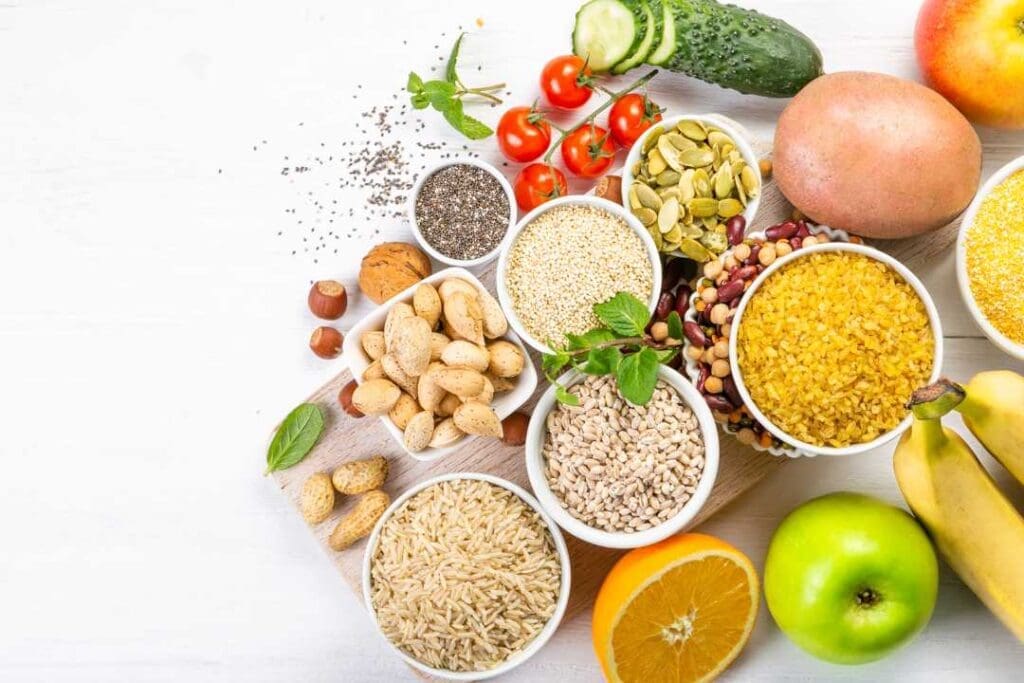
The foods you eat have a powerful impact on your energy, mood, and long-term health. By understanding concepts like glycemic load, avoiding hidden sugars, pairing carbs with protein and fat, and incorporating light activity after meals, you can take control of your blood sugar. Swap the chaos for balance, and feel the difference in your energy and well-being every day.


